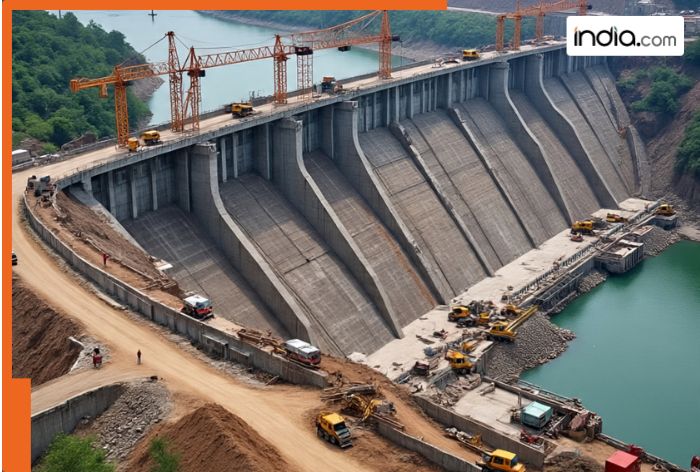Politics
India Challenges China’s Dam Plans with Strategic Project Launch

The Indian government has launched a significant initiative aimed at countering China’s ambitious plans for the development of the world’s largest dam on the Brahmaputra River. On May 21, 2023, engineers from the National Hydroelectric Power Corporation (NHPC) transported drilling equipment to Beging village in Arunachal Pradesh, where they began preliminary studies for the proposed Siang Upper Multipurpose Project (SUMP). This strategic project aims to construct a dam that will not only generate power but also serve as a crucial reservoir to address potential water diversion by China.
Local opposition to the dam is growing, particularly from the Adi community, who have expressed concerns about the environmental and social impacts of the project. Reports indicate that protestors blocked access to Beging by cutting off its only hanging bridge, damaging drilling equipment, and effectively halting survey work. In response to escalating tensions, local authorities temporarily suspended operations to avoid further confrontation in this sensitive border area.
Strategic Water Management and Local Impact
The SUMP is estimated to cost approximately ₹1.5 lakh crore and includes a proposed dam standing at 267 meters high, with a storage capacity of 9.2 billion cubic meters. This project is expected to generate 1,000 megawatts of electricity, providing 12 percent of its output as free electricity to Arunachal Pradesh, along with revenue sharing benefits. These developments coincide with China’s announcement of its own dam project on the Brahmaputra, a move that has raised alarm in India.
Arunachal Pradesh’s Chief Minister Pema Khandu expressed serious concerns regarding the potential implications of the Chinese dam, stating on July 9, 2023, that it poses an “existential threat” to local tribes and livelihoods. He described the risk of China using the dam as a “water bomb,” highlighting the urgent need for India’s defensive strategy in a region marked by geopolitical tensions.
While the Indian government remains committed to the SUMP, questions linger about its effectiveness as a deterrent against China’s water management strategies. Critics warn that such projects could exacerbate environmental vulnerabilities in the Eastern Himalayas, an area already facing significant ecological challenges.
A Broader Context of Regional Water Management
The construction of the Siang Upper Multipurpose Project and its timing reflect India’s response to China’s increasing influence over shared water resources in the region. As both nations navigate their complex relationship, the situation underscores the importance of strategic water management in the Eastern Himalayas.
The ongoing developments have significant implications for not just regional politics but also for the communities directly affected by these large-scale infrastructure projects. As tensions rise, the focus on responsible and sustainable management of water resources will be paramount in ensuring the well-being of local populations and the environment.
The situation continues to evolve, and further responses from both governments are anticipated as they balance development needs with environmental and social considerations.
-

 World5 months ago
World5 months agoSBI Announces QIP Floor Price at ₹811.05 Per Share
-

 Lifestyle5 months ago
Lifestyle5 months agoCept Unveils ₹3.1 Crore Urban Mobility Plan for Sustainable Growth
-

 Science5 months ago
Science5 months agoNew Blood Group Discovered in South Indian Woman at Rotary Centre
-

 World5 months ago
World5 months agoTorrential Rains Cause Flash Flooding in New York and New Jersey
-

 Top Stories5 months ago
Top Stories5 months agoKonkani Cultural Organisation to Host Pearl Jubilee in Abu Dhabi
-

 Sports5 months ago
Sports5 months agoBroad Advocates for Bowling Change Ahead of Final Test Against India
-

 Science5 months ago
Science5 months agoNothing Headphone 1 Review: A Bold Contender in Audio Design
-

 Top Stories5 months ago
Top Stories5 months agoAir India Crash Investigation Highlights Boeing Fuel Switch Concerns
-

 Business5 months ago
Business5 months agoIndian Stock Market Rebounds: Sensex and Nifty Rise After Four-Day Decline
-

 Sports5 months ago
Sports5 months agoCristian Totti Retires at 19: Pressure of Fame Takes Toll
-

 Politics5 months ago
Politics5 months agoAbandoned Doberman Finds New Home After Journey to Prague
-

 Top Stories5 months ago
Top Stories5 months agoPatna Bank Manager Abhishek Varun Found Dead in Well









